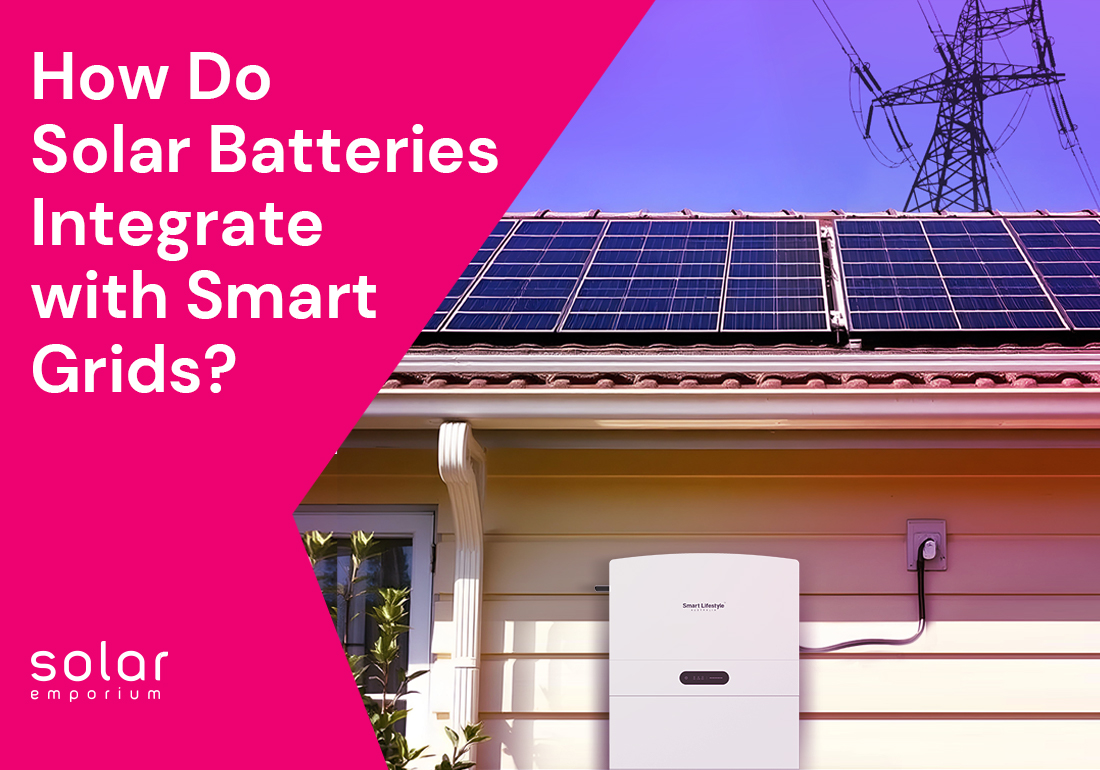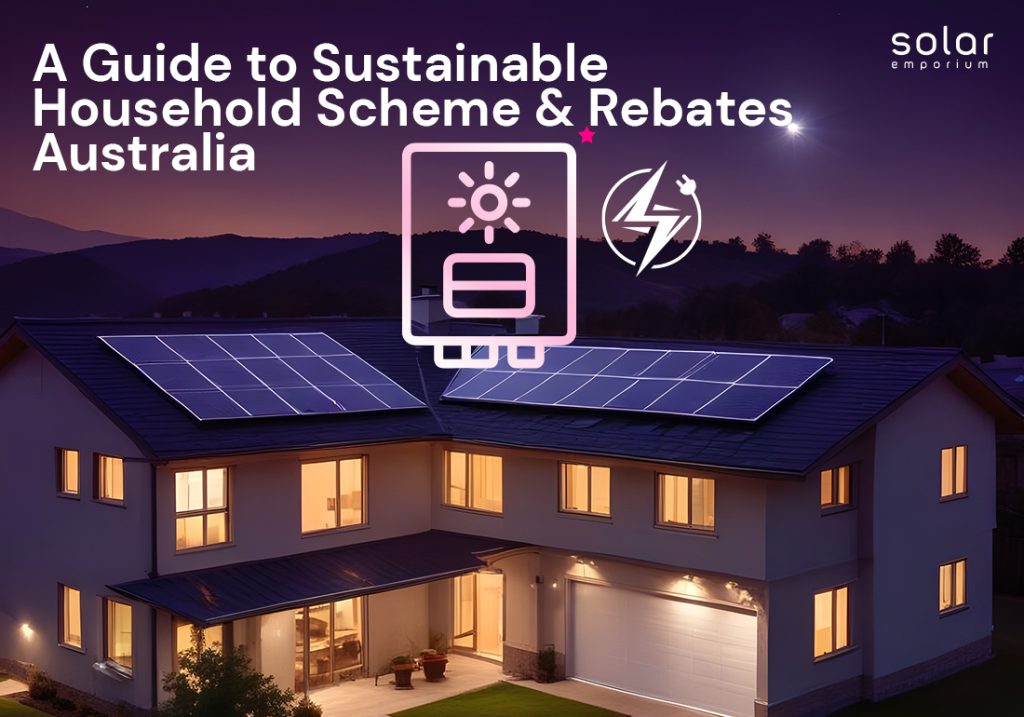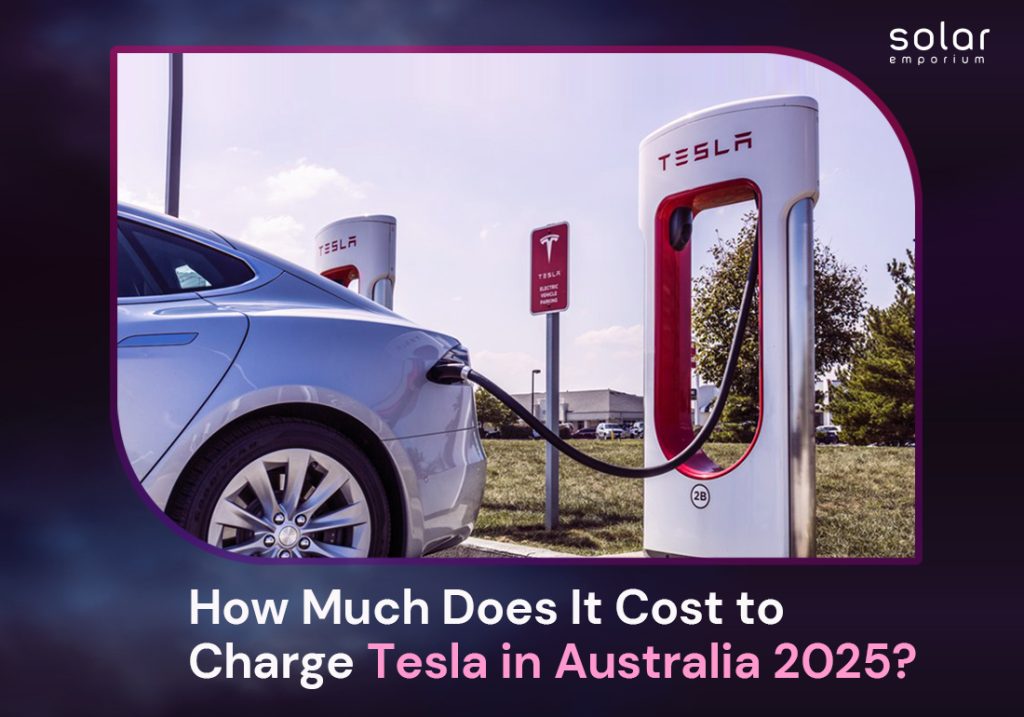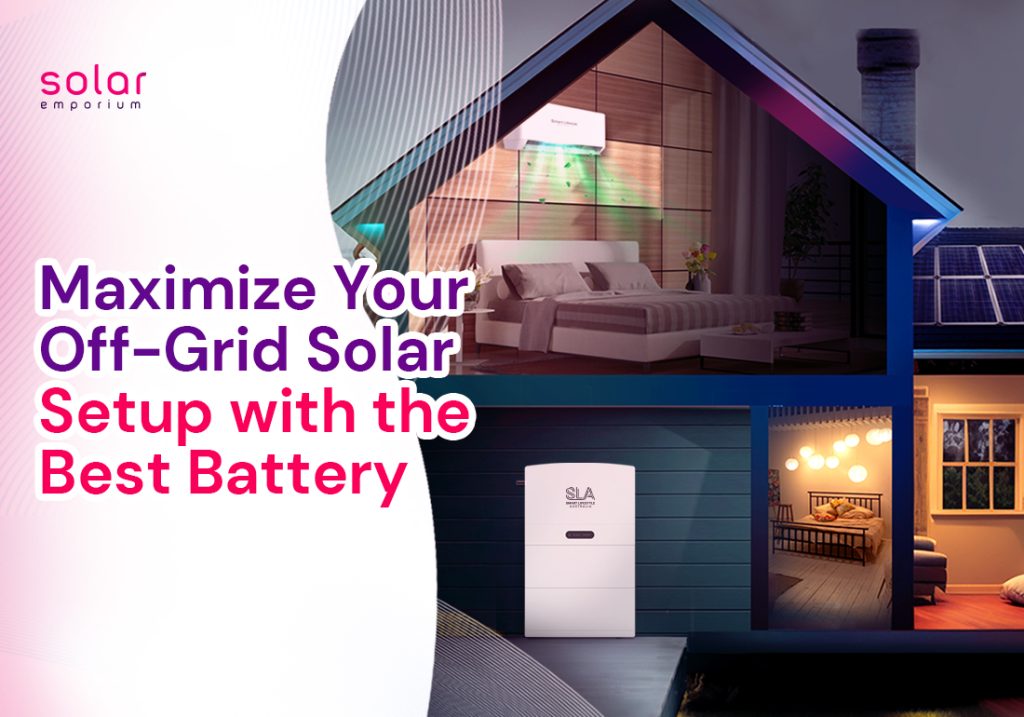Do you know Australia led the world in solar per capita? Over one-third of Queensland, South Australia, and NSW households have rooftop installations.
As Australian residents look towards a future dominated by renewable energy, integrating solar batteries with a smart grid significantly revolutionizes residential energy management systems.
These innovative technologies add a new dimension to the overall energy system, allowing for seamless communication with the broader energy network.
But how does this integration transform your daily life and the way you generate, store, and use energy?
In this blog, let’s explore how solar batteries integrate with smart grids to create an efficient, energy-resilient, and sustainable future for everyone!
Solar Batteries Basics: Energize Your Life
Solar batteries store excess energy generated by solar panels during peak sunlight hours. This stored energy is later used to power up household appliances when the solar production rate lowers, such as at night or on cloudy days.
The battery storage systems help maximize the benefits of solar power and set a new standard for efficiency and reliability in Australia’s evolving energy solutions landscape.
Exploring the Varieties of Solar Battery Storage
When looking for the best solar batteries that are highly compatible and have unique features for smart grid integration, you’ll find several options available in the market.
The global market is led by Lithium-Ion Batteries, Nickel-Cadmium Batteries, Advanced Lead-acid Batteries, Flow batteries, and Sodium-sulfur batteries. Each of them has unique features to address the different storage needs of the users.
Lithium-ion Batteries are the most widely used batteries for residential solar systems and grid connections. Despite their high costs, their efficiency, compact size, and high energy density make them a popular choice in the solar battery world.
People also prefer other affordable battery types, like flow or lead-acid batteries, which have been traditionally used for years.
However, they have a shorter lifespan and lower energy efficiency than lithium-ion batteries. Some are also more suitable for a larger system with great scalability and longevity.
Are you looking for a battery storage system for your home?
You can check Solar Emporium as we offer a wide range of batteries from different manufacturers. The list includes Tesla Powerwall, Sungrow, Energizer Alpha ESS, and many more.
A Journey Through Energy Grid Evolution
The energy grid has undergone significant transformations over the years, adapting to technological advancements, changing societal needs, and environmental considerations.
The traditional grid system begins with centralized power distribution and has many limitations. They require manual monitoring, are vulnerable to power outages, and have higher carbon emissions.
However, the recent emergence of smart grid systems in Australia positively enhances the efficiency of electricity services.
It also increases the overall reliability of electricity supply to meet the needs of a rapidly changing world.
What is a Smart Grid?
A smart grid system is usually an advanced electrical network that distributes power to the infrastructure while allowing two-way communication between the user and service provider.
This digitally enhanced grid system includes various sensors, smart technologies, and many advanced technologies for accumulating real-time data about your energy usage and grid conditions.
Why Being Smart is Key: Importance of Connecting Solar Batteries to Smart Grids
Living in an era that values technology and renewable energy systems for sustainability, being smart helps to analyze situations to achieve better results.
Modern smart grid systems face a range of challenges, such as load fluctuations, climate change issues, or equipment failures. Any of these unexpected problems can cause grid failure if the grid doesn’t have a proper power backup.
There comes the importance of solar batteries! Wondering how?
Adding solar batteries with smart grids provides initial backup. With the excess stored energy from the battery, this integration restores grid stability and smooths out the energy demand fluctuations.
So, integrating solar with a smart grid is already making a difference in the energy distribution system, ensuring a win-win situation for all involved.
Solar Batteries & Smart Grid: The Dynamic Duo
Solar Batteries & Smart Grid: The Dynamic Duo
While looking for a resilient energy future, solar batteries and smart grids are two peas in a pod that complement each other.
They work in a synchronized manner, ensuring uninterrupted power throughout the years.
When solar batteries integrate with smart grids, more people can enjoy clean, eco-friendly power. This also reduces reliance on fossil fuels, the primary energy source of traditional grid systems.
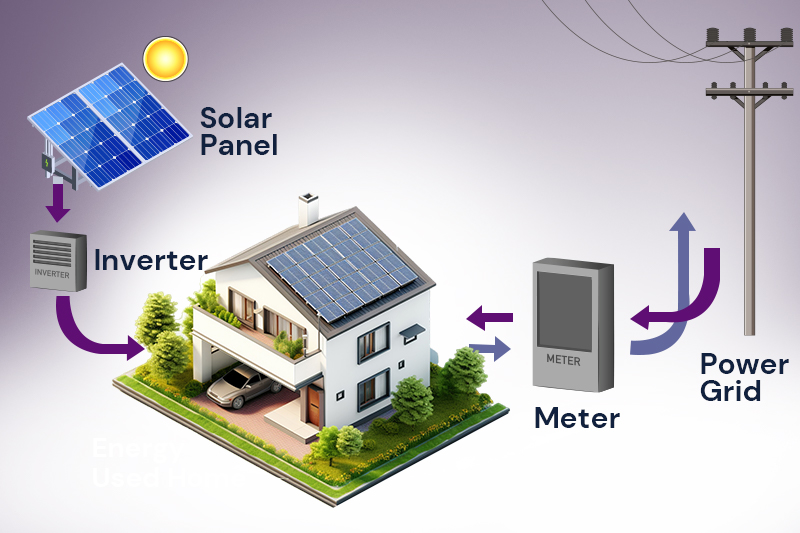
How to Integrate Solar Batteries with Smart Grids in Australia
The integration of Solar batteries with the smart grid is undoubtedly a smart move for Australians. By embracing this smart, renewable energy solution, the residents can offset their reliance on grid electricity.
Moreover, through this grid integration process, homeowners can achieve financial benefits by selling extra energy to the grid during peak demand hours.
So, before hovering over the benefits, let’s know how this smart grid integration with solar batteries is done in Australia:
Installation of Solar Panels with Battery Storage System
- In the initial phase, you must perform a proper site assessment to install the solar panel system.
- Evaluate the property details and design the solar PV system based on your energy needs.
- Install solar panels on rooftops and batteries in designated spaces.
Connect to the Smart Grid Systems
- Before integrating the Battery Energy Storage System (BESS) into the grid, ensure your solar battery is compatible with the local smart grid infrastructure.
- Install a smart solar inverter to facilitate two-way communication with the grid.
Registration and Approval
- Get all the necessary approvals from your local energy network provider for legal and smooth grid connection.
- Keep in mind that your system must meet Australian energy standards and regulations.
Smart Meter Installation
- If your battery is not connected to smart meters, it’s time to upgrade it. Wondering why? Smart metering allows you to monitor and measure energy consumption and generation in real time.
Interaction with the Smart Grid Technology
- Use updated software to track real-time data, monitor the rate of energy production vs consumption and battery status.
- Participate in demand response programs, where you can adjust your usage based on grid demand. This increases efficiency
- You can send back the excess energy to the grid to supply power in underprivileged areas where it’s needed most, thus reducing the peak load pressure on the grid.
Function of Energy Management Systems (EMS)
- Using an EMS can optimize your energy usage. It also coordinates with the grid and manages battery charging and discharging rates, maximizing the battery’s lifespan.
- An Energy Management System (EMS) provides homeowners with apps or interfaces to track performance and manage energy.
Regular Performance Optimization
- To ensure optimal performance, the user should schedule regular monitoring after the solar battery integration process.
- Analyze energy usage data to refine system performance and increase the efficiency of the solar panel and electrical grid.
This integration process of energy storage technologies with a smart grid connects different devices, sensors, and advanced equipment to enhance energy security.
From solar panels or battery storage in your home to the power plant miles away, it’s like having an extensive network where every device collaborates with each other.
Sounds crazy, isn’t it?
So, this is how the combination of solar batteries and smart grid contributes to a more resilient and sustainable energy grid in the Australian landscape.
Top Benefits of Integrating Solar Batteries with Smart Grid Technology
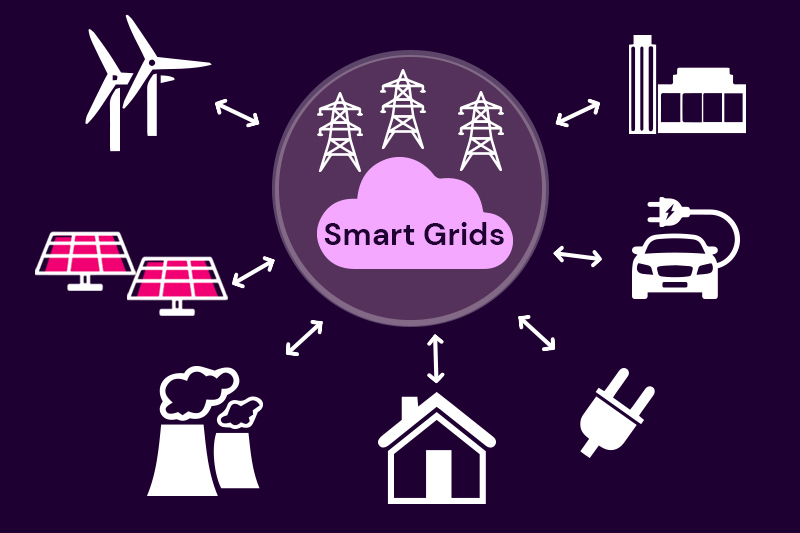
Till now, it’s clear that batteries and smart grids work harmoniously, increasing efficiency and flexibility in power distribution while maintaining grid stability.
But the question is, what are the core advantages?
Let’s see the broader picture of solar energy integration with smart grid technology:
Enhanced Energy Efficiency, Improved Reliability, and Resilience
Smart grids integrated with energy storage systems can quickly adapt to unexpected issues. During peak demand hours, they ensure a secure power supply with the stored energy, so consumers experience fewer power outages than usual.
Economic Benefits
Investing in solar battery storage is already a smart financial move, but do you know combining it with a smart grid increases the benefits even further?
Picture this: besides storing energy for cloudy days, by integrating batteries with a smart grid, you can optimize energy use in real-time, reduce costs, contribute to job creation, and even sell excess power back to the grid, fostering economic growth.
It’s like giving your energy system a brain that enhances efficiency and reliability in the Australian energy sector.
Peak Shaving and Demand Response (DR)
Smart grids facilitate demand response programs encouraging users to use less energy during peak hours. Solar batteries also contribute to these efforts by providing electricity to the grid when the demand is high.
These initiatives not only reduce grid pressure but also help in peak shaving, thus reducing the overall energy cost.
Integration of Clean Renewable Energy
Smart Grid-scale energy storage with solar batteries helps transition to clean energy solutions by reducing reliance on fossil fuels.
This renewable energy source and smart grid combination bridges the gap between peak demand and supply. While it is essential for reducing our carbon footprint, it also plays a significant role in mitigating climate issues.
Technical Barriers to Combine Solar Batteries with Smart Grids
Combining solar batteries with smart grids presents several technical barriers. The challenges include interoperability, developing advanced energy management systems, the high initial investment for grid connection, and cyber threats.
However, the main obstacle to this integrated system is ensuring energy security. As it incorporates many new technologies, the widespread connected cyber networks have made them more vulnerable to cyber-attacks.
Different manufacturers utilize various protocols and standards, making the solar battery integration process difficult with the existing grid.
It can be challenging to manage consistent regulations, process real-time data efficiently, and provide a user-friendly interface for managing storage systems within the smart grid.
Still, addressing these barriers will be essential for the successful integration, enabling more sustainable and resilient energy systems.
Future Trends in Smart Grid and Solar Battery Integration in Australia
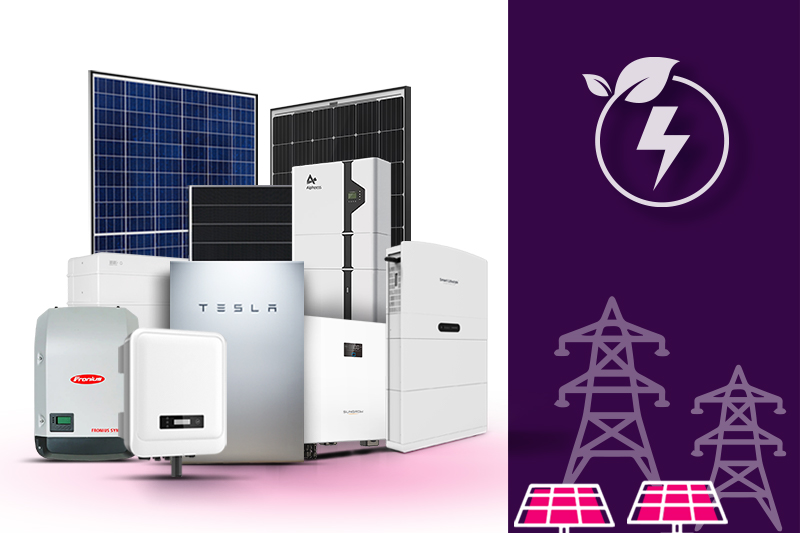
In Australia, the future of smart grid and solar battery integration ensures a promising solution for sudden disruptions or fluctuations in the energy sector.
The ongoing technological advancements and new emerging trends in battery storage systems and smart grids make the systems more robust and polished. Solar batteries with smart grid connections offer cost-effective, efficient, and sustainable ways for users to control their energy consumption rate.
Government policies on solar adoption and support for renewable energy, including solar batteries, will also continue to play a crucial role. Initiatives that promote investment in smart grid infrastructure will further enhance integration.
In conclusion, by participating actively in this energy revolution, the solar with smart grid integration process leads us to the right path toward a cleaner and more sustainable future.
Keep your eyes on Solar Emporium to discover more about solar panels, battery solutions, and grid connection. Also, don’t miss the opportunity to get free solar quotes today!
